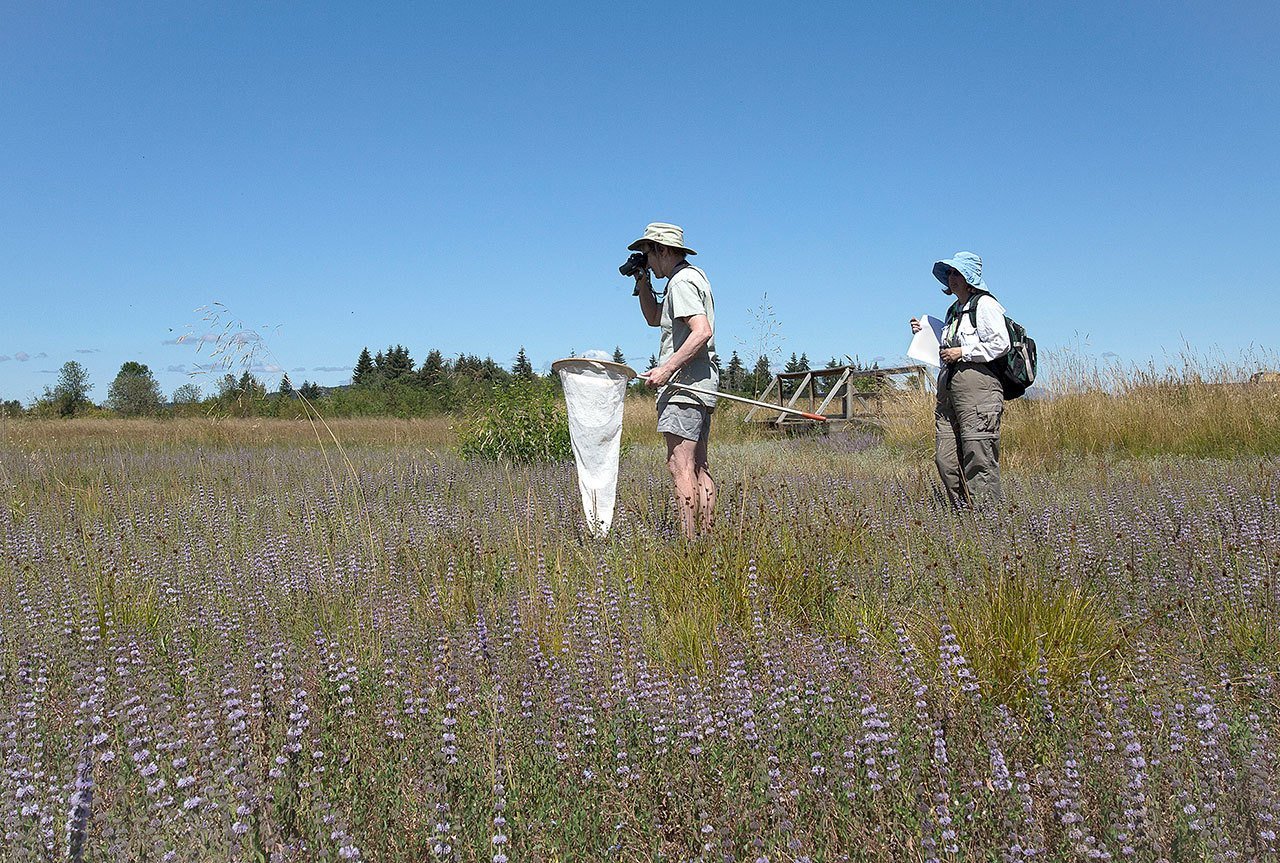By Diane Dietz
The Register-Guard
EUGENE, Ore. — Four women set out in the west Eugene wetlands to chase the ephemeral flashes and flutters of July-awakened butterflies.
They sought the Eastern tailed-blue, the ochre ringlet and — were they to be lucky — the California tortoiseshell, reported The Register-Guard.
The comely insects skimmed the swaying heads of dry grasses, wove down among the stalks, popped up and turned in the air before disappearing again, low down.
“Why don’t you stop and stay still for a moment so we can look at you?” retired psychiatrist and volunteer naturalist Jo von Hippel said to a chocolate brown, common wood-nymph butterfly.
Though the flitting creatures are sometimes hard to follow, the butterfly ties together — as if by invisible filament — people, landscapes and continents.
The butterfly, for example, was the subject of high-level international diplomacy in Ottawa recently at the so-called three amigos summit of Mexican President Enrique Pena Nieto, President Obama and Canadian Prime Minister Justin Trudeau.
The monarch butterfly, Pena Nieto told the amigos, “is a species that, in its pilgrimage, we can see how our countries are intertwined.”
The butterfly is a genteel creature. Although a bird will consume a butterfly, a butterfly eats naught but the nectar of flowers — a vegan without an attitude.
“They’re beautiful and sweet,” said Kathryn Kemp, retired mental health counselor and novice butterfly watcher.
Unlike the pursuit of birding, butterflying takes place at a civilized hour because butterflies don’t come out until the day warms to at least 60 degrees.
“If I can wear a T-shirt it’s good butterflying,” said David Hagen, member of the North American Butterfly Association’s Eugene-Springfield chapter.
Butterfly watchers tend to be gentle people, too. Some practice catch-and-release, which allows them to net butterflies, gently scoop them into a clear cup, examine them — and then set them free again.
“I’m sorry we’re disturbing you,” Kemp said upon liberating a tiny Eastern tailed-blue. “You are so cute.”
For some butterfly watchers, even a gentle netting is too disturbing, and they advocate butterflying with special binoculars that feature a short focal point. A picture with a date and time stamp is enough for verification that they saw the species.
In the west Eugene wetlands, the butterfly watchers saw three common wood-nymphs before they even left the parking lot. In a half-mile walk, they spotted 39 butterflies belonging to a half dozen species.
The outing, one of three that day, was for the purpose of an annual count, which the organization compiles and scientists can use to establish the range of butterflies and the characteristics of their habitat.
From a distance, the look of a tall grass field off West 11th Avenue where the women hunted butterflies is deceptive.
Closer, you see the prairie floor is purple with pennyroyal blossoms. Nectar-oozing flowers sprinkle the landscape, showing Oxford daisies, Queen Anne’s lace, St. John’s Wort, mule’s ears and a purple, flowering vetch.
The women capture the first of three Eastern tailed-blue butterflies.
An antennae-like spine trails its hind wings with a yellow dot nearby.
That’s to trick a predator bird into taking a bite of the hind quarters, a strike the butterfly could survive, tour guide and biologist Alison Center said.
A wood-nymph bobbed and weaved around the women, “doing what butterflies do — tease,” Kemp said.
But the women were rewarded with the sight of two bright orange sulfur butterflies and a cluster of Western tiger swallowtail supping on teasel flowers.
“I love it when they’re on that teasel,” said Linda Gilbert, a retired physical therapist and butterfly enthusiast.
The women visited two additional sites in west Eugene, and they counted a couple of monarchs, a dun skipper, a great copper, some gray hairstreaks, and a common checkered skipper.
Altogether, the women saw 103 butterflies belonging to 11 species, Center said.
For Lois Hagen, current president of the Eugene-Springfield chapter, the Holy Grail is not one specific butterfly, but “any butterfly I haven’t seen yet.”
Talk to us
> Give us your news tips.
> Send us a letter to the editor.
> More Herald contact information.

























